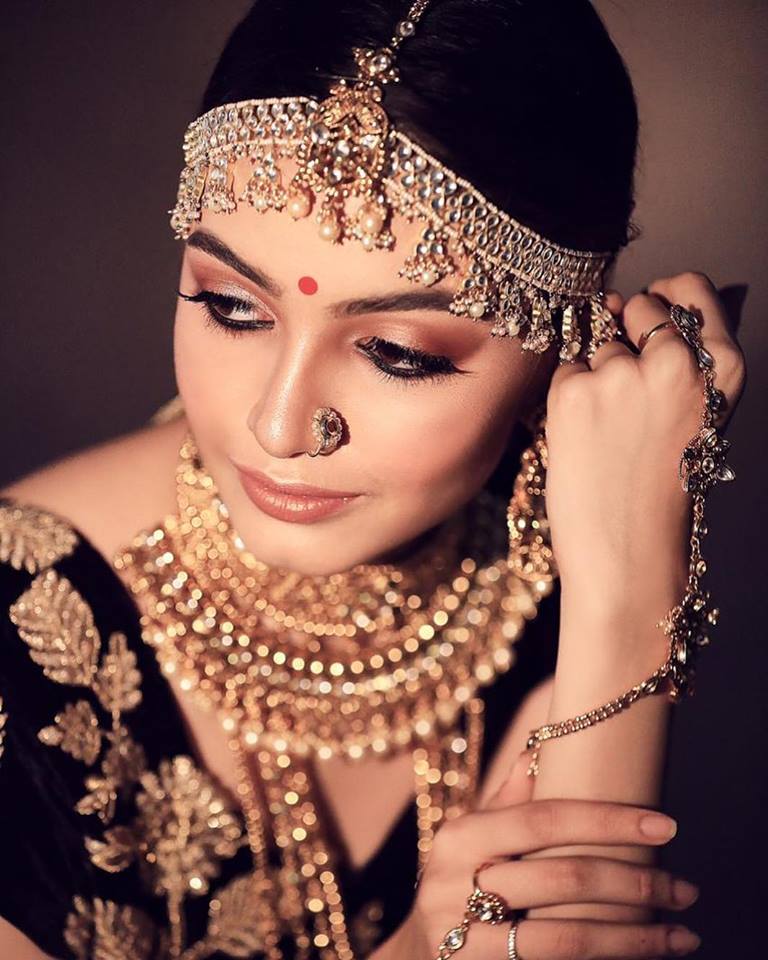
Image courtesy Kinjal’s Makeovers
India is a country that’s home to a variety of religions and cultures, and every part of the Indian subcontinent has something special to portray. The rich cultural diversity of this nation and the eclectic mix of rituals come to life on happy occasions like weddings.
Diverse Nation!
India has 29 states, each representing unique wedding rituals and traditions. However, in all cultures, the bride is the star of the occasion. Everyone’s eager to get a glimpse of the bride and shower her with good wishes. No wonder, every Indian bride-to-be invests her time and effort in looking her best during this period. In fact, the concept of solah shringar or 16 steps to beauty is deep-rooted in the Indian culture and has been passed on to the modern brides, enabling them to exude charm and gracefulness on their wedding day. Each of the charming Indian brides mentioned in this post has a unique element in her bridal attire, making her look and feel special.
The Lucknowi Bride
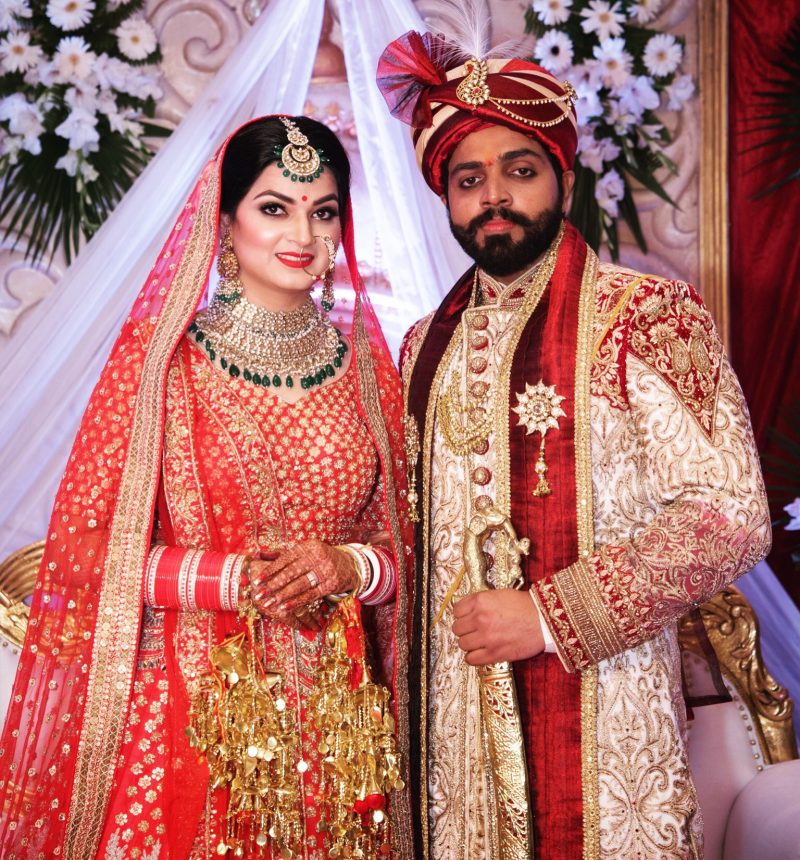
Image by Mohit Arora
Lucknow, the city of Nawabs, is historically known for its royalty. Thus, right from her attire to her accessories, the Lucknowi bride exudes regal flair. The bride usually wears a heavy hand-embroidered zardozi lehenga or sharara in bright shades like red, pink, or green. The jewellery is elaborate, comprising the maang tika, the jhoomar paasa, necklace, earrings, and rings. Intricate henna designs on the hands and the feet are an important part of the bridal updo.
The Punjabi Bride
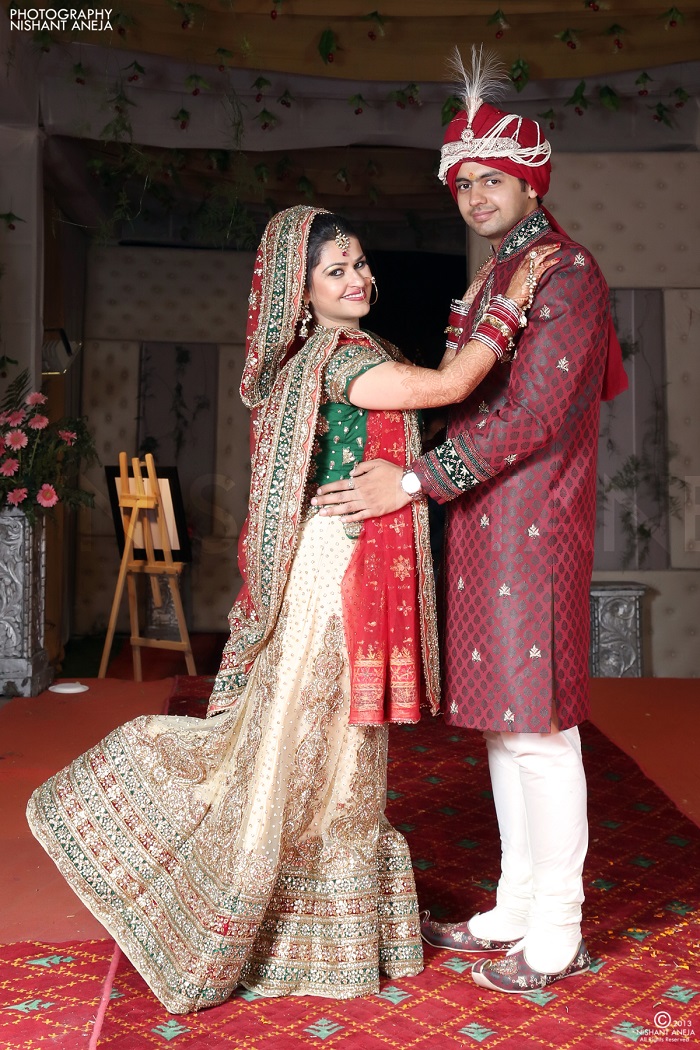
Image by Nishant Aneja
Punjabi weddings are celebrated for their pomp and high glam quotient. Though modern brides choose from the latest bridal fashion trends, a few traditional wedding accessories are worn by every Punjabi bride. Accessories, such as the kaleere, chooda, maang tika, nath (nose ring), juttis (flat footwear), and dupatta are an integral part of the Punjabi bridal attire. A few of these accessories have ceremonial significance. For instance, the bride is supposed to shake the kaleere (accessory attached to the bangles) over the heads of unmarried girls at the wedding. The one who receives a part of it is believed to be the next in line to get married.
The Kashmiri Bride
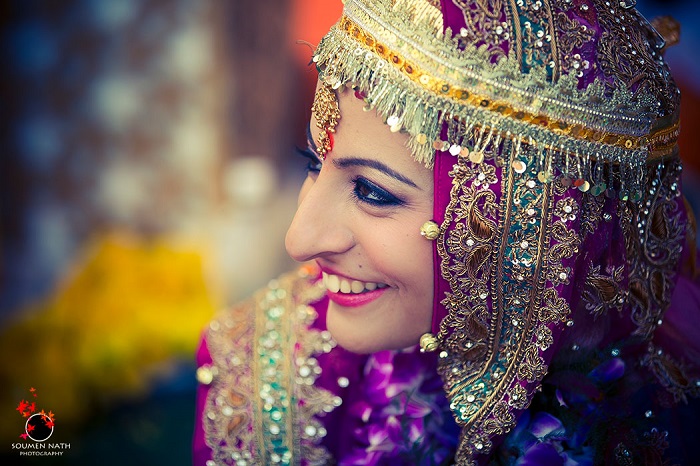
Image by Soumen Nath
Since Kashmir is influenced by the rich Islamic and Hindu traditions, the bridal attire reveals an amalgamation of Iranian, Turkish, and Indian dressing styles. The traditional Kashmiri bride wears the captivating pheran, a long heavily-embroidered gown, along with silver jewellery and a taranga, an embellished silk headgear that accentuates her beauty.
The Muslim Bride
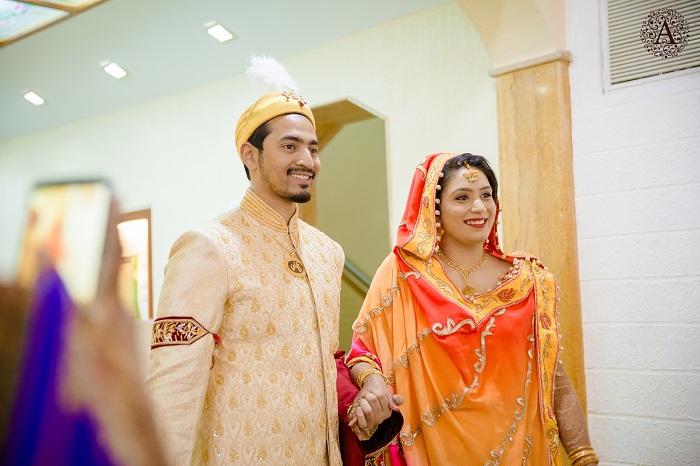
Image by Amour Affair
The most striking features of the Muslim bride’s attire are the intricate jewellery pieces, floral garlands, and a silk cloth tied around her wrist. This silk band secures a gold or silver coin gifted by her mother. Besides, one or two days before the wedding ceremony commences, the bride’s hands and feet are adorned with henna patterns, symbolizing her fertility, beauty, and optimism towards starting a new chapter in life.
The Gujarati Bride
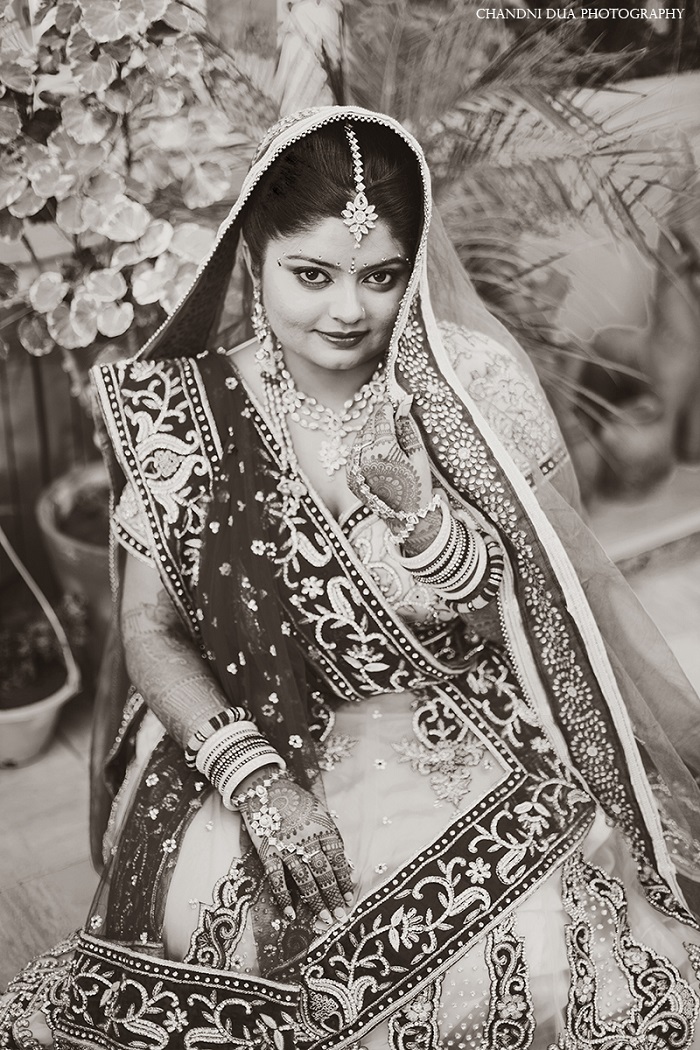
Image by Chandni Dua
The gorgeous Gujarati bride typically wears the traditional panetaar, a white silk saree with a bright red border and zari work. She can also wear the gharchola, a red and green bandhini saree with a gold border. The wedding saree is usually gifted by her maternal uncle. She drapes the saree in a peculiar Gujarati style and complements the attire with gold ornaments or gemstone trinkets.
The Maharashtrian Bride
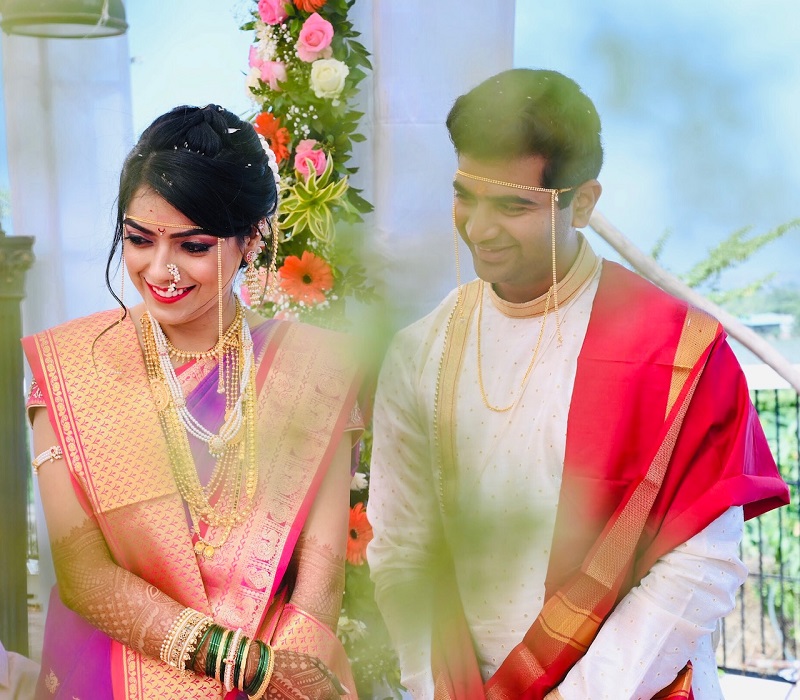
Image Jaikar Photography
The bridal attire elements that set a Marathi bride apart are the mundavalya (a string white pearls worn on the forehead), a brightly-coloured Paithani saree worn in dhoti style, and the traditional nath. During the marriage rituals, it is customary for the groom to tie the mangalsutra (sacred thread) around the bride’s neck, signifying marital union and devotion to the new relationship. The mangalsutra customarily comprises black beads and a gold pendant. However, modern Marathi brides tend to pick from a classy collection of gold mangalsutra studded with diamonds and other precious stones.
The Goan Bride
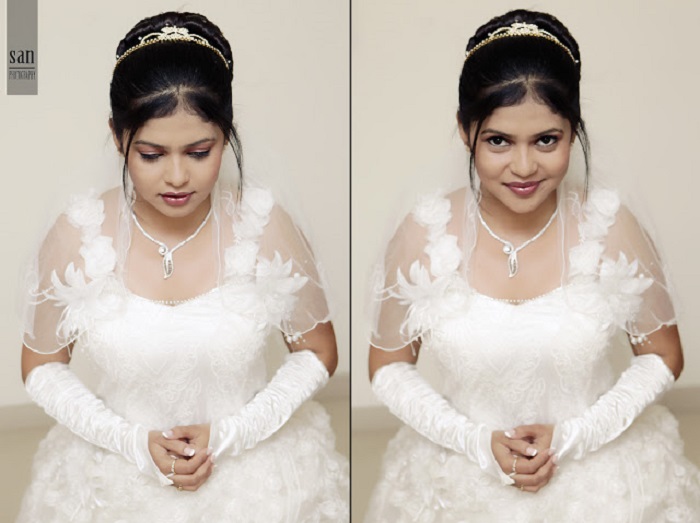
Image San I Photography
The wedding traditions in Goa display a unique blend of Portuguese and Indian cultures. The Goan Christian bride wears a white gown coupled with gold or diamond jewellery. It is also ceremonial to wear the chuddo, colourful glass bangles gifted by maternal uncles.
The Bengali Bride
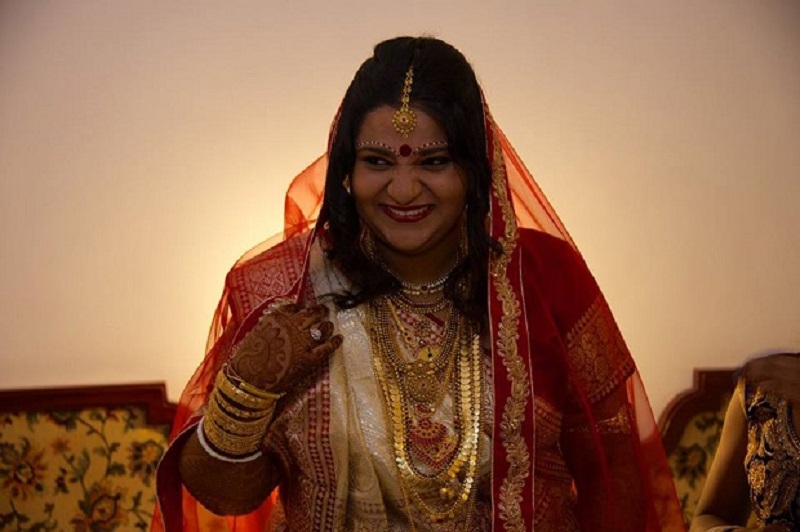
The stunning Bengali bride wears a red or maroon saree embellished with heavy gold zari work. Unlike most cultures that use henna, Bengali women use aalta, a red pigment to adorn their hands and feet. Apart from gold ornaments, the bridal wears the traditional wedding bangles set comprising the white shell bangles (shankha), red coral bangles (pola), and iron bangles (loha). Her attire is incomplete without the quintessential sholar mukut, a white headgear and the chandan patterns that adorn her forehead.
The Tamil Bride
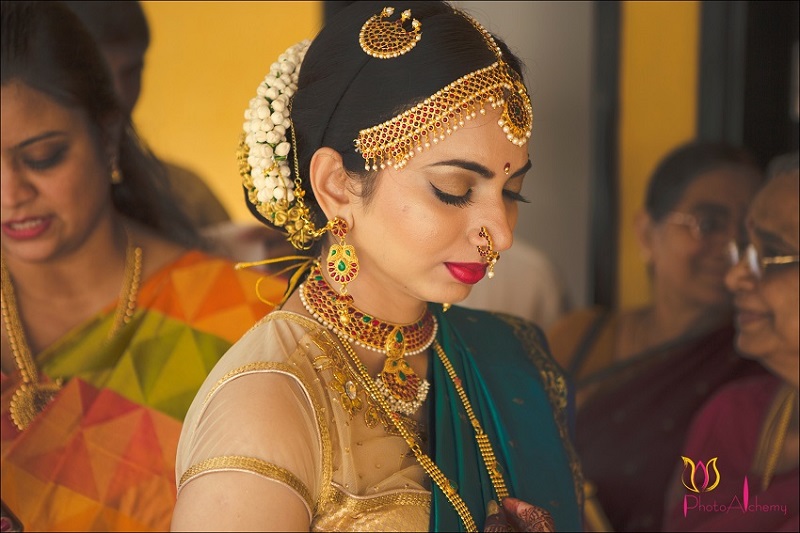
Image PhotoAlchemy
The Tamil bride is an icon of beauty, royalty, and elegance. The Tamil Brahmin bride wears a nine-yard Kanjeevaram saree (a non-Brahmin bride dresses in a six-yard saree). The bride adorns herself with heavy gold ancestral jewellery pieces, such as toe rings, anklets, nose studs, a waistband, earrings, necklaces, and the jadanagam, used for decorating her braid. Her hair is mostly tied up into a bun or a braid, and is embellished with fragrant flowers and gold ornaments.
The Kerala Bride

Image via YouTube
Malayali brides often don a white or cream Kanjeevaram saree or lehenga on their wedding day. A Christian Keralite bride can choose to wear a gown or a white saree with golden border. Since gold ornaments are the soul of this Indian state, most Malayali brides love to bling it up on their memorable day. Brides often wear intricate gold necklaces, earrings, bangles, and head jewellery to flaunt their beauty and family status. Floral jewellery, made using flowers like jasmine and tuberose, is also used to enhance the bridal look.
The bridal attire in India is defined by the region’s unique customs and rich history. We hope you enjoyed reading about the mesmerizing Indian bridal looks and their significance.
